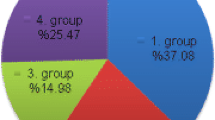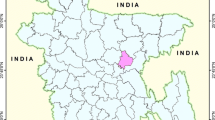Abstract
Seeking effective policies for reducing chemical pesticides has recently been the focus of agricultural sustainable development. A randomly selected sample of 559 small-scale farmers on the China Loess Plateau was investigated in 2018. We analyzed the effect of certification of agricultural production on the adoption of integrated pest management (IPM) by using the Poisson regression model. The result shows that the certification of agriculture products, subsidies of integrated pest management, and the price increase of certified agriculture products significantly promote the adoption of IPM. However, government supervision in certified agriculture products does not significantly promote the adoption of IPM. The cognition of IPM acquired by farmers significantly promotes the adoption of IPM, while the age of farmers negatively affects the adoption of IPM. We suggest that the government should strengthen the certification of agriculture products and provide subsidies of the adoption of IPM for farmers who produce certified agriculture products. The market needs to guarantee a higher price of certified agro-products which the IPM are adopted. The government should strengthen supervision of certified agriculture products, promote the extension of IPM and enhance farmers’ knowledge of IPM, and promote more farmers to replace chemical pesticides with IPM.

Similar content being viewed by others
Data availability
The datasets used and/or analyzed during the current study are available from the corresponding author on reasonable request.
References
Barzman M, Bàrberi P, Birch ANE, Boonekamp P, Dachbrodt-Saaydeh S, Graf G et al (2015) Eight principles of integrated pest management. Agron Sustain Dev 35:1199–1215
Blair A, Ritz B, Wesseling C, Freeman LB (2015) Pesticides and human health. Occup Environ Med 72:81–82
Buurma JS, van der Velden NJA (2017) New approach to integrated pest management research with and for horticulture. A vision from and beyond economics. Crop Prot 97:94–100
Chu CB, Li P (2014) Analysis of farmers’ adoption willingness of IPM: using 402 farmers in Anhui Province as an example. Fin Trade Res 25(03):57–65
Creissen HE, Jones PJ, Tranter RB, Girling RD, Jess S, Burnett FJ, Gaffney M, Thorne FS, Kildea S (2021) Identifying the drivers and constraints to adoption of IPM among arable farmers in the UK and Ireland. Pest Manag Sci 77:4148–4158
Damalas CA, Eleftherohorinos IG (2011) Pesticide exposure, safety issues, and risk assessment indicators. Int J Environ Res Publ Health 8:1402–1419
Deguine JP et al (2021) Integrated pest management: good intentions, hard realities. A Review Agron Sustain Dev 41:41–38
Fantke P, Friedrich R, Jolliet O (2012) Health impact and damage cost assessment of pesticides in Europe. Environ Int 49:9–17
Gao Y, Zhang X, Lu J et al (2017) Research on adoption behavior of green control techniques by family farms. Res Sci 39(05):934–944
Geng YL, Zheng SY, Lu Q (2017). Study on the impact of economic incentives and social networks on farmers’ adoption of IPM: evidence from the main kiwi producing area in Shaanxi. J. Hz. Agr. Uni. 06: 59–69+150.
Griliches Z(1957). Hybrid corn: an exploration in the economics of technological change. Econometrica. 25(4): 501–522.
Grung M, Lin Y, Zhang H, Streen AO, Huang J, Zhang G, Larssen T (2015) Pesticide levels and environmental risk in aquatic environments in China-a review. Environ Int 81:87–97
Guo L, Yang Y (2014) Investigation and analysis on the farmers’ adoption of vegetable IPM techniques: A case study of Sichuan Province. J Xi’ an Uni Fin Eco 27(02):97–102
Harris ML, Norton WG, Karim ANMR, Alwang J, Taylor BD (2013) Bridging the information gap with cost-effective dissemination strategies: the case of integrated pest management in Bangladesh. J Agric Appl Econ 45(4):639–654
Henry EC et al (2019) Measuring the unmeasurable? A method to quantify adoption of integrated pest management practices in temperate arable farming systems. Pest Manag Sci 75:3144–3152
Hou B, Wu L (2010) Safety impact and farmer awareness of pesticide residues. Food Agr Immunol 21:191–200
Jean-P D et al (2021) Integrated pest management: good intentions, hard realities. A Review Agron Sustain Dev 41:38
Kabir MH, Rainis R(2015). Adoption and intensity of integrated pest management (IPM) vegetable farming in Bangladesh: an approach to sustainable agricultural development. Environ. Dev. Sustain. 17(6): 1413–1429.
Kvakkestad V et al (2021) Pesticide Policies and Farm Behavior: the Introduction of Regulations for Integrated Pest Management 11:828
Labussière E, Barzman MS, Ricci P (2010). European crop protection in 2030-a foresight study. 383 ENDURE (France) Editions INRA, Paris (France) 82.
Lamichhane JR, Dachbrodt-Saaydeh S, Kudsk P, Messéan A (2016) Toward a reduced reliance on conventional pesticides in European agriculture. Plant Dis 100:10–24
Lamichhane JR, Akbas B, Andreasen CB et al (2018a) A call for stakeholders to boost integrated pest management in Europe: a vision based on the three-year European research area network project. Int J Pest Manag 64:352–358
Lamichhane JR, Arseniuk E, Boonekamp P et al (2018b) Advocating a need for suitable breeding approaches to boost integrated pest management: a European perspective. Pest Manag Sci 74:1219–1227
Landrigan P, Fuller R, Acosta N, Adeyi O, Arnold R, Basu N (2018) The Lancet commission on pollution and health. Lancet London 391:462–512
Lewin K (1943) Defining the “Field at a given time.” Psychol Rev 50(3):292–310
Liu Y, Xiong XP, Liu HQ, Liu EQ (2015) Research on farmers’ willingness to adopt green control techniques and influencing factors: empirical evidence from 348 farmers in Hunan Province. J Chn Agr Uni 20(04):263–271
Mian MY, Hossain MS, Karim ANMR(2016). Integrated pest management of tropical vegetable crops: integrated pest management of vegetable crops in Bangladesh, ed. by Rangaswamy Muniappan,E. A. Heinrichs, Springer Netherlands, Dordrecht, pp. 235–249.
Muuss RE (1995) Theories of adolescence. Crown Publishing Group/Random House, New York
Sadique RM, Norton GW, Harun-Ar RM (2018) Economic impacts of integrated pest management on vegetable production in Bangladesh. Crop Prot 113:6–14
Samiee A, Regvanfar A, Faham E (2009) Factors influencing the adoption of integrated pest management by wheat growers in Varamin County. Iran Am J Agr Res 4(5):491–497
Sanzidur R(2013). Pesticide consumption and productivity and the potential of IPM in Bangladesh. Science of the Total Environment.445–446.
Timprasert S, Datta A, Ranamukharachi SL (2014) Factors determining adoption of integrated pest management by vegetable growers in Nakhon Ratchasima Province. Thailand Crop Prot 62:32–39
Vinod P,Doom S,Arun KS(2017). Constraints faced by the farmers about IPM in paddy cultivation in Etawah district. Asian Journal of Multidimensional Research (AJMR).6(7).
Wang YQ, Wang Y, Huo XX, Zhu YC (2015) Why some restricted pesticides are still chosen by some farmers in China? Empirical evidence from a survey of vegetable and apple growers. Food Control 51:417–424
Wang YQ, Wang Y, Zhu YC (2018) What could encourage farmers to choose non-chemical pest management? Crop Prot 114:53–59
Yu YH, Zhang JY (2009) Farmers’ willingness to use rice IPM and its influencing factors: based on survey data from Hubei Province. Chin Rural Econ 11:77–86
Zhao LG, Cai SK (2012). Analysis of influencing factors of farmers’ IPM adoption behavior: evidence from Wuhu city, Anhui Province. Isu. Agr. Eco. 33(03): 50–57+111.
Zhao LG, Cai SK (2013) Analysis of pesticide cost-saving and grain yield increasing effect of IPM adopted by late rice farmers. Chin Rural Econ 05:78–87
Acknowledgements
We thank our colleagues Mrs. Zhao Minjuan, Mr. Xuexi Huo, and Mr. Lu Qian for their comments on the draft of this research paper. We also thank graduate students He Lijuan, Lu Xiaohua, Zhang Chi, Deng Jianfeng, Xu Baoshi, Wang Taiyun, Li Yanfang, He Yamei, Zhang Huili, and Xingyan and undergraduate students Liang Yingying, Li Jiaojie, Wang Xinhao, and Kuang Xiaoyu for their data collection in farmers’ homes or farms. The authors particularly appreciate the amending advice of the editor and anonymous reviewers for the refinement of the manuscript.
Funding
This study was funded by the Youth Foundation of Humanities and Social Science under the Ministry of Education of China (19YJC630176), the Social Science Foundation of Northwest A&F University (2452020060), and the Research Foundation of Shaanxi Qinling Forest Ecosystem National Field Research Station (2018QNFERS-OPP-1).
Author information
Authors and Affiliations
Contributions
RT analyzed and interpreted the farmers’ data of the initial manuscript. YW provided the Poisson regression model and check the results. RT and YW were major contributors in writing the manuscript. YCZ provided the economic theory, checked the manuscript, and gave amending advice of the manuscript. YQW provided the initial idea, designed the questionnaire, revised the manuscript, and applied for above fundings. All authors read and approved the final manuscript.
Corresponding author
Ethics declarations
Ethics approval and consent to participate
Not applicable.
Consent for publication
Not applicable.
Competing interests
The authors declare no competing interests.
Additional information
Responsible Editor: Baojing Gu.
Publisher's note
Springer Nature remains neutral with regard to jurisdictional claims in published maps and institutional affiliations.
Responsible editor: Baojing Gu
Rights and permissions
About this article
Cite this article
Tong, R., Wang, Y., Zhu, Y. et al. Does the certification of agriculture products promote the adoption of integrated pest management among apple growers in China?. Environ Sci Pollut Res 29, 29808–29817 (2022). https://doi.org/10.1007/s11356-022-18523-5
Received:
Accepted:
Published:
Issue Date:
DOI: https://doi.org/10.1007/s11356-022-18523-5




